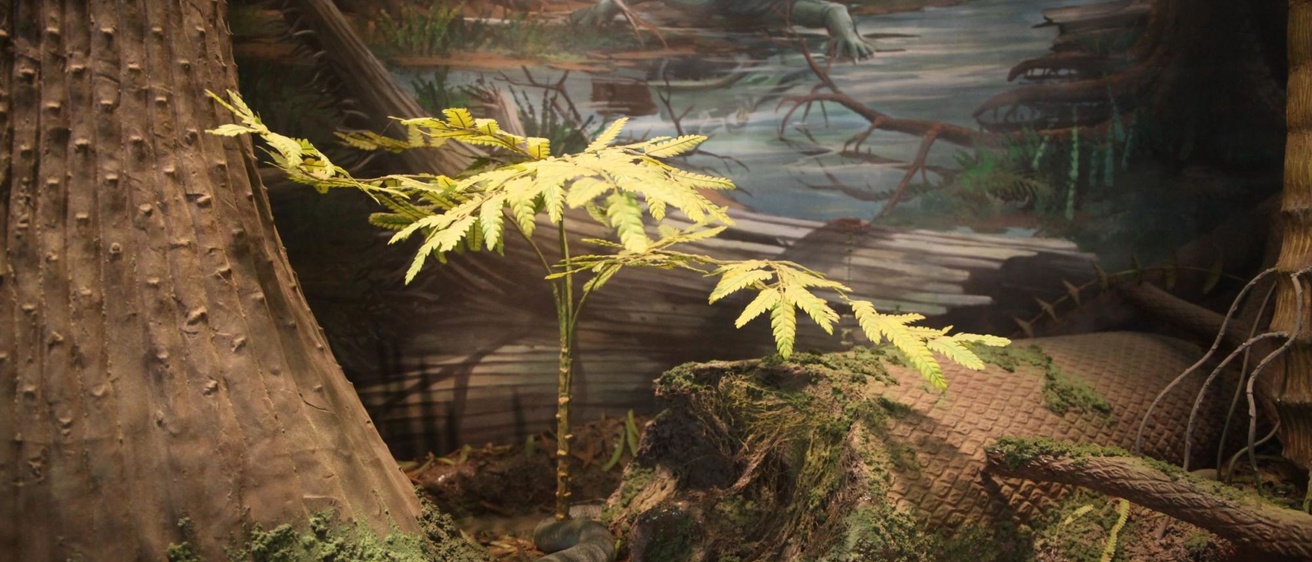Pennsylvanian Coal Swamp
The coal swamp diorama takes you to a geologic period 300 million years ago called the Pennsylvanian Era. In this time, Iowa existed as a lush, tropical swamp on the shores of a shallow sea. The club mosses, or "scale trees," and ferns grew quickly, and when they died the vegetation accumulated more quickly than it decayed. Heat, pressure, and the passage of millions of years converted the peat to coal.
One of the most dramatic changes in the geologic story of Iowa is the state's shifting position on the globe. Using lasers that measure distances between reference points on different continents, scientists have determined that the continents are moving laterally as much as four inches per year. Minor as this may seem, it adds up to a shift of more than 6,000 miles in 100 million years. This explains how limestone, which forms only in tropical waters, could be common in Iowa: the state once was near the equator. This also explains the tropical climate that allowed for the growth of the large, tropical forests which formed in Iowa's coal swamps. Coal mining was a major industry in Iowa until the 1920's when railroads switched to diesel fuel. Work in the mines attracted immigrants from England, Wales, Sweden, Croatia, and many other countries to Iowa.
